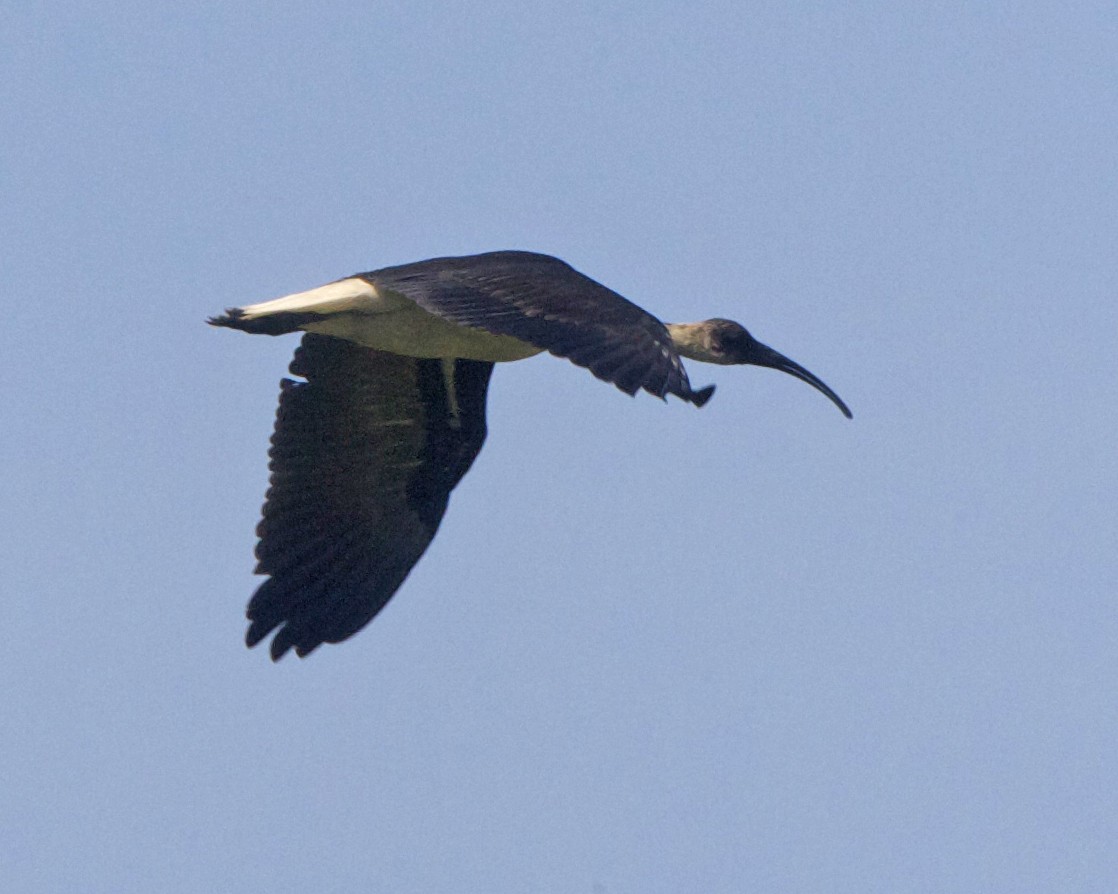Straw-necked Ibis
A species of Sacred Ibises and Allies Scientific name : Threskiornis spinicollis Genus : Sacred Ibises and Allies
Straw-necked Ibis, A species of Sacred Ibises and Allies
Botanical name: Threskiornis spinicollis
Genus: Sacred Ibises and Allies
Content
Description People often ask General Info
 Photo By Lip Kee , used under CC-BY-SA-2.0 /Cropped and compressed from original
Photo By Lip Kee , used under CC-BY-SA-2.0 /Cropped and compressed from original Description
Straw-necked ibises are large birds, around 59–76 cm (23–30 in) long, with a bare black head and a long, downcurved black bill. They have a distinctive, highly iridescent plumage, which can appear fairly uniform dirty dark brown in indifferent light; the wings are dark, with an iridescent, multicoloured sheen in sunlight. They have a shiny blue-black back, with a metallic purple, green and bronze glow, and a dark collar. The upper neck is white, as are the underparts and the undertail; their legs are usually red near the top and dark grey toward the feet. Adults have straw-colored feathers on the neck, giving the bird its common name. Their wingspan is about 100–120 cm (39.5–47 in) and weight is generally 1.1–1.5 kg (2.5–3.5 lb). Sexes are similar, although males have longer bills and females have a dark band across their upper breast. Juveniles have duller colors and shorter bills with less curvature, and lack the straw-like plumes on the neck. 
Size
76 cm
Colors
Brown
Black
Green
Bronze
White
Blue
Purple
Life Expectancy
15 years
Nest Placement
Tree
Feeding Habits
Straw-necked Ibis's diet consists of invertebrates, insects, mollusks, frogs, crayfish, and occasionally reptiles and rodents. They forage in shallow waters and on land, often consuming pests beneficial to agriculture. They are less opportunistic than related species, rarely scavenging human waste.
Habitat
Straw-necked Ibis thrives in freshwater environments, particularly favoring shallow wetlands, grasslands, and cultivated areas. Adaptability allows them to inhabit open forests and human-modified landscapes as well. Nomadic in nature, they seek out habitats offering optimal conditions, avoiding arid, coastal, and saline regions. Roosting typically occurs in trees or reeds, with nesting in wetland vegetation or on the ground.
Dite type
Omnivorous
People often ask
General Info
Feeding Habits
Bird food type
Distribution Area
Straw-necked ibises are commonly found throughout Australia, nesting at least occasionally in all mainland states and territories, except in the arid interior. They are most abundant on the east coast, and are vagrant to New Zealand, Norfolk Island and Lord Howe Island. They are less frequently seen in New Guinea, Indonesia, and occasionally in Tasmania and other islands of the Bass Strait. Found around shallow freshwater wetlands, cultivated pastures, edges of swamps and lagoons, and wet or dry grasslands. They tend to avoid arid and saltwater areas, and coastal mudflats. They are extremely nomadic, and are constantly on the move searching for suitable habitats. They are frequently seen standing on high branches of bare trees, silhouetted against the sky. 
Species Status
Not globally threatened.
Scientific Classification
Phylum
Chordates Class
Birds Order
Pelicans and Relatives Family
Ibises and spoonbills Genus
Sacred Ibises and Allies Species
Straw-necked Ibis